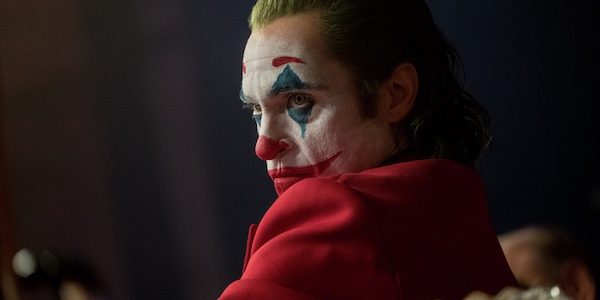
ReelBob: ‘Joker’ ★★★
By Bob Bloom
The Joker may be the most iconic villain in pop culture because he touches a nerve that is dormant within us all — the urge to commit the unspeakable, to create chaos and to instill fear for its own sake.
These all are dark notions we, as humans, harbor in our deepest recesses. They are mostly held in check by the mores of civilization, the environment in which we grow up and the influences — be it parents, teachers, coaches or religious affiliations — that set our paths on a righteous trajectory.
The Joker has had many incarnations since his debut in 1940 — in comic books, on screen and on television.
The version presented by Joaquin Phoenix in “Joker” reflects today’s fractured landscape that is filled with resentment of the very rich few who seem to float above the vast majority of people who live, as many politicians like to continually say, “from paycheck to paycheck.”
And director Todd Phillips’ reiteration of the Joker taps into that divisive society, even though the movie’s setting is more reminiscent of 1970s’ New York City, when the Big Apple was rotting at the core.
Phoenix’s character, Arthur Fleck, lives in a Gotham City overflowing with trash, because of a garbage strike, and “super rats” that threaten residents. Fleck, who earns his living as a clown for hire, reminds me of Joe Btfsplk, the character from the old “Li’l Abner” comic strip who was a walking jinx with a dark cloud always over his head.
From the outset, Fleck appears to be a doormat for people to step on or over. Working in front of a store that is failing, he carries a going-out-of-business sign that is stolen by a group of youths who beat him when he finally catches up with them.
He is continually harangued by his boss, and his frail mother asks Arthur, who dreams of being a stand-up comic, “Don’t you have to be funny to do that”?
Piling on more, Fleck has a mental condition that, when stressed, he begins laughing uncontrollably.
The script, by Phillips and Scott Silver, intersperses Fleck’s imaginary life with his reality, so, at times, you may question what appears on screen.
Phillips and Silver are trying to make “Joker” a Martin Scorsese-like supervillain origin story. They create situations that recall moments from “Taxi Driver” and “The King of Comedy,” going so far as to cast Robert De Niro as Murray Franklin, a late-night entertainment host patterned on Johnny Carson, who also served as the template for Jerry Lewis’ Jerry Langford in “King of Comedy.”
And like De Niro’s Travis Bickle in “Taxi Driver,” Fleck begins to have inner conversations with himself.
The writers are more intent, it seems, on making social statements than fully focusing on the dynamics that transformed Fleck into the Joker.
Some plot points are telegraphed way in advance; a sharp filmgoer can figure out well in advance who will feel the future Joker’s wrath.
But raising the movie above these shortcomings is Phoenix’s performance. Looking wan, he is fully committed to showing the human side of this soon-to-be monster.
All Fleck wants is to be noticed and respected, but he is denied and betrayed at every turn — and by those he considers closest to him, his mother and Franklin.
Phoenix deftly shows the madness slowly creeping into his soul and psyche, until it reaches a breaking point on a subway.
His gradual transformation is frightening to observe, as is his physical alteration. At the outset, he trudges around Gotham, but as the movie progresses, his steps become lighter, more graceful and dance-like. It is as if he is shucking off a withered husk to reveal a straighter, more sure-footed creation.
The performance is mesmerizing. You can’t take your eyes off Phoenix and can’t wait to see the mayhem he inspires when he finally reveals his true nature.
Two peripheral subplots are distractions — one involves Fleck’s single-mom neighbor with whom he conjures a romantic involvement, and the other centers on Gotham’s most prominent citizen, Thomas Wayne.
“Joker” is a character study of an individual pushed past the breaking point and, as Phillips and Silver infer, it gives Gotham City the dark jester it so richly deserves.
Many moments in “Joker” are pretentious and derivative, but when Phoenix turns his dead eyes toward you, all you see is him and the nightmare scenario surging in his heart and mind.
I am a founding member of the Indiana Film Journalists Association. My reviews appear at ReelBob (reelbob.com) and Rottentomatoes (www.rottentomatoes.com). I also review Blu-rays and DVDs. I can be reached by email at bobbloomjc@gmail.com or on Twitter @ReelBobBloom. Links to my reviews can be found on Facebook, Twitter and LinkedIn.
JOKER
3 stars out of 4
(R), graphic and bloody violence, language, disturbing images, sexual images